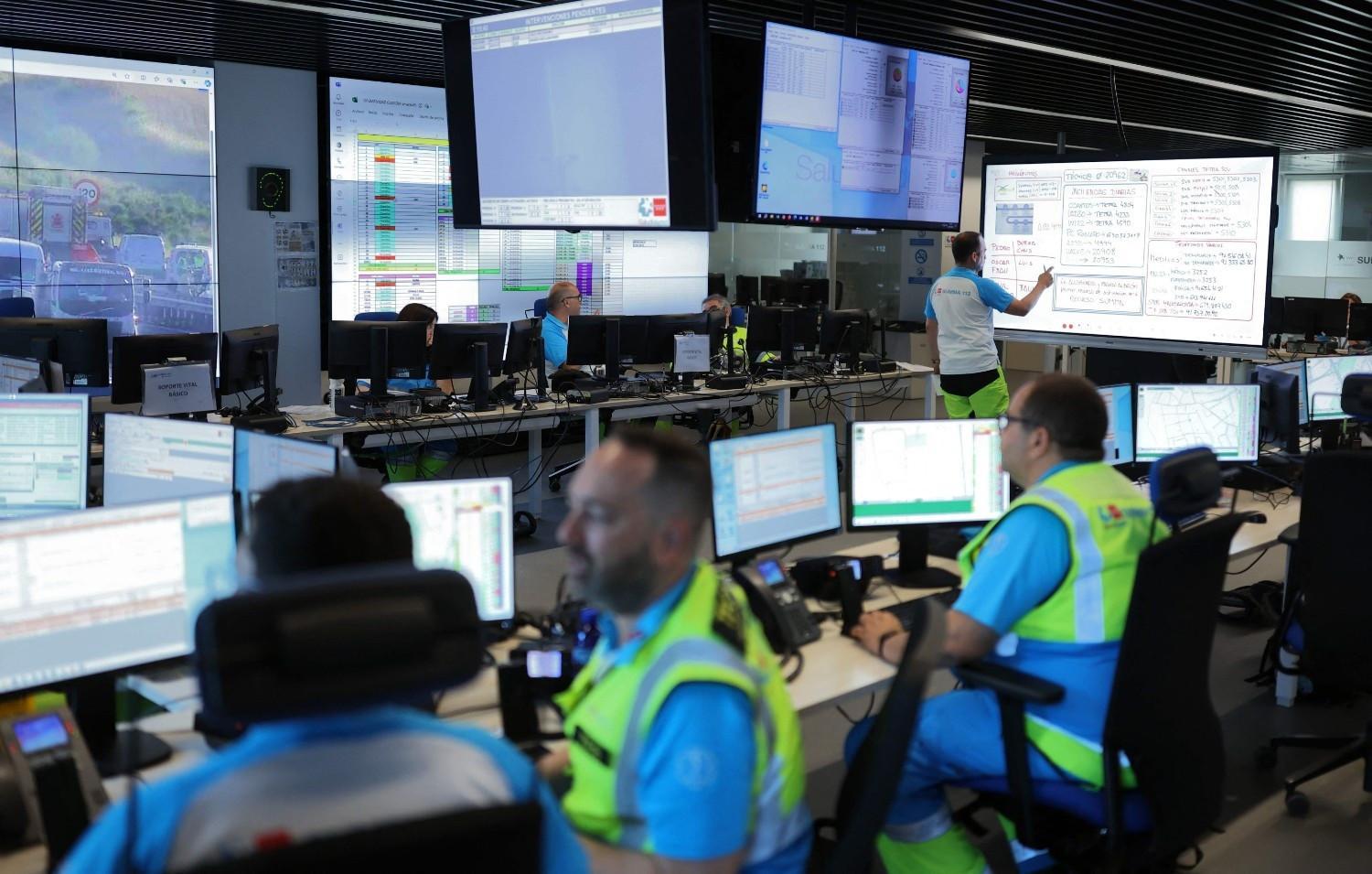
Medical dispatchers answer calls to Madrid's SUMMA emergency medical services number and prioritize interventions at the main emergency call centre for the whole Madrid region, in Valdebebas, on the outskirts of Madrid, on June 26, 2025.
As dangerously high temperatures sweep across parts of the United States and southern Europe this week, emergency workers are racing to mitigate the public health risk of heatstroke.
Spanish rescuers took AFP through the warning signs and best responses to the potentially fatal condition, as a heatwave grips Spain, Portugal, France and the Balkans.
Scientists warn that periods of extreme heat will become longer, more frequent and more intense as human-induced climate change accelerates.
In a large room at Madrid's Isabel Zendal hospital, emergency medical staff adjusted their headphones and fixed their gaze on their computer screens.
They receive 3,500 calls every day, some caused by falls, fainting and other dangers linked to overheating.
But identifying heatstroke straight away is "difficult", said Gemma Rodriguez, a team leader at the SUMMA 112 emergency service.
The symptoms can "point to another condition, for example, an unconscious person, a person who has fallen over... or has trauma, and the primary cause could have been heatstroke," she told AFP.
To diagnose the condition, doctors typically examine whether the patient has a body temperature of over 40 degrees Celsius; whether their skin is hot and dry; or whether they are sweating heavily, nauseous or vomiting, she added.
In extreme cases, heatstroke can cause incoherent speech and loss of consciousness, and can even prove fatal if left untreated.
Rodriguez said vulnerable groups like children, the elderly and people with chronic illnesses should pay particular attention to the warning signs.
When someone has heatstroke, the priority is to bring down their body temperature, for example by moving them into the shade or an air-conditioned room, anything to shield them from the sun, Rodriguez explained.